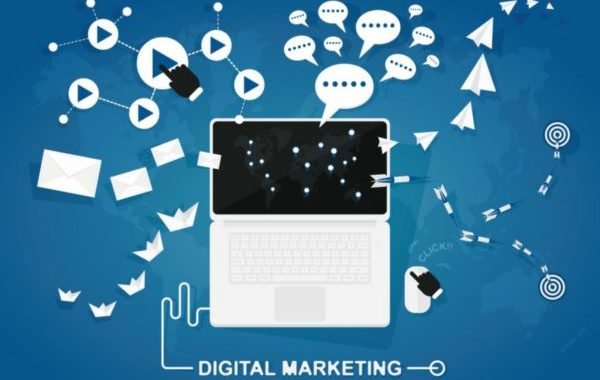
Quick Guide: How To Create Your Digital Marketing Plan
In this article, you will learn what a digital marketing plan is and how it can help your business? Also, how to make sure your website is helping your digital marketing.
Imagine ShimmerXYZ Studio is a salon known for chic haircuts and colorings. They know everything about hair, but feel lost when it comes to digital marketing. They have a website, but haven’t updated it in ages. They pay to run search ads, but don’t monitor them. They have social media, but only sign in occasionally. It’s no surprise that these tools haven’t been helping their business much.
Quick Tip: Setting goals, making a schedule, and assigning responsibilities are aspects of a digital marketing plan, which is like a roadmap to more effective marketing.
Why Do You Need A Digital Marketing Plan?
Making a plan can help you see how your digital marketing is working and which parts need a makeover. A plan can also help you be proactive about your marketing goals, as opposed to just responding to situations as they arise.
Here’s how your digital marketing checklist should look:
- Goals: What are your short term and long term goals? How can your digital marketing help you achieve them?
- Actions: What are your specific actions for the achieving those goals?
- Channels: What digital marketing channels (website, social media, email) will you use?
- Who/When: Who on your team (in-house or outsourced) is responsible for what and when is the best time for implementation?
Before creating your digital marketing plan, it helps to take a good look in the mirror at your brand’s identity, personality, and audience. Customers who come to ShimmerXYZ for a cut usually know what they want their new hairstyle to look like. They’ve thought about their image and how they want to be perceived by the world. You should do the same with your brand.
Ask yourself:
- Why is my brand unique?
- What is my desired tone of voice and attitude when talking to my audience?
- What is my core message?
Your answers can help form a foundation for what you want your marketing to achieve.
Next, zero in on your target audience. What types of people are you trying to market and sell to? What are their demographics (age, gender, location, etc.)? What about more subjective qualities like their interests, attitudes, and opinions?
Then think about the best places to reach your target audience with your digital marketing. Where are they active on social media? Are there blogs and websites they visit that you could be advertising on? What keywords do they search?
How To Create A Digital Marketing Plan
After you’ve considered your identity and audience, think broadly about your business goals, or what you want your digital marketing to accomplish. Boosting sales is an obvious goal for any brand. You may also want to improve your brand awareness, build a larger social media presence, or appeal to a new audience. Once you’ve written out your business goals, think about how your digital marketing can help you attain each of them. In other words, what digital marketing actions do you need to take to make your goals a reality?
When your goals and actions are mapped out, focus on your marketing channels and make sure they’re all updated and working at full capacity.
Start with your website.
Make sure the user experience (UX) lets people easily do what they came to your site to do. Running user tests can help you see how people interact with your site and identify things that need to change. With more and more people browsing on the go, it’s important that your website looks good on mobile phones. You can use a tool like Google’s Mobile Friendly Test to see if your site is up to speed.
You should also adjust your website for search engine optimization (SEO). Web programs like Google can tell you which keywords are currently leading your audience to your site. Once you know those keywords, adjust your page titles and copy to feature the terms your audience searches for the most. This will improve your organic search results on sites like Google and Bing. If you have the budget, you can use these same keywords to run search ads that will help attract more site visitors. A service like Google AdWords can help you set a budget and figure out if search ads are right for you.
Social Media
Next, think about your social media accounts and how you can engage more with your audience. Figure out who is responsible for running your social media accounts and what voice and tone you want to use. Then make posts, create conversations, and reply to your audience’s comments and questions. Maybe social media ads and promoted posts make sense for your business. Most social networks provide ad calculators that show you how much you need to pay for the volume of impressions you’d want.
Before you run social media ads, just be sure to figure out what your ad will say, who you’ll be targeting, what action you want people to take, whether your ads will update and change, and how you’ll measure your results.
Content and email marketing are two other important channels that can help you achieve your business goals. Is there content (like blog posts) you could create that will entertain or inform your target audience? ShimmerXYZ could post about side ponytails and teased bangs making a comeback, and why that’s the worst thing ever. Make a plan for how to create content (will you create it in-house or hire a copywriter, what will they create, and when will it happen?). Then figure out where it’ll be posted and how you’ll promote it.
Email Marketing
One way to promote content and work towards other business goals is email marketing. You could link to your blog posts, send a newsletter, or release information about a sale or exclusive offer. Emails should always be useful, timely, and/or interesting and should be sent at a regular pace. Use your other marketing channels to drive sign-ups for your email list by offering exclusive deals and information.
Your marketing channels are all connected, so when you’re working to update and optimize them, think about how your audience moves from one to another (from your social media page to your website, for example). The more your marketing channels work together, the better.
When you’ve got your marketing channels up to speed, create a schedule of next steps and assign responsibilities. Your schedule can include things like when you want to write and send certain emails, when you want to make social media and blog posts, and how often you need to monitor and adjust your ad buys. After making your schedule, decide who on your team should be responsible for doing each step. Of course, not every business will have people who are qualified to do everything on your schedule.
If you can’t run parts of your digital marketing internally, but have the budget, working with an outside digital marketing agency to run your programs can be a good option. If you do work with an agency, you’ll need to teach them about your brand identity and goals and work with them to establish your schedule and the actions you want to take to grow your business.
Author Bio:
Awad El Makkawi is the founder and managing director of BizBridged. With enough expertise to deliver the highest standard of client relations, clients will also have access to constant stream of valuable information and guidance to further their knowledge and in turn improve informed business decisions making and strategy.



